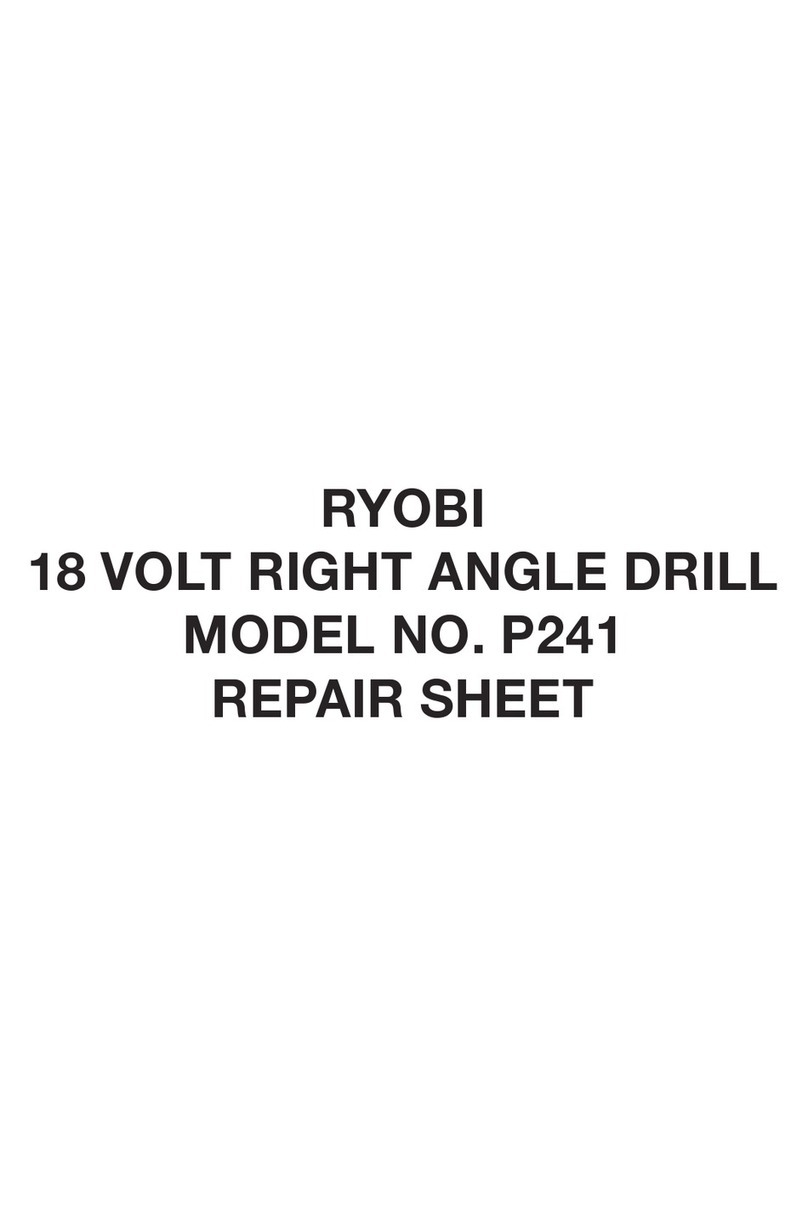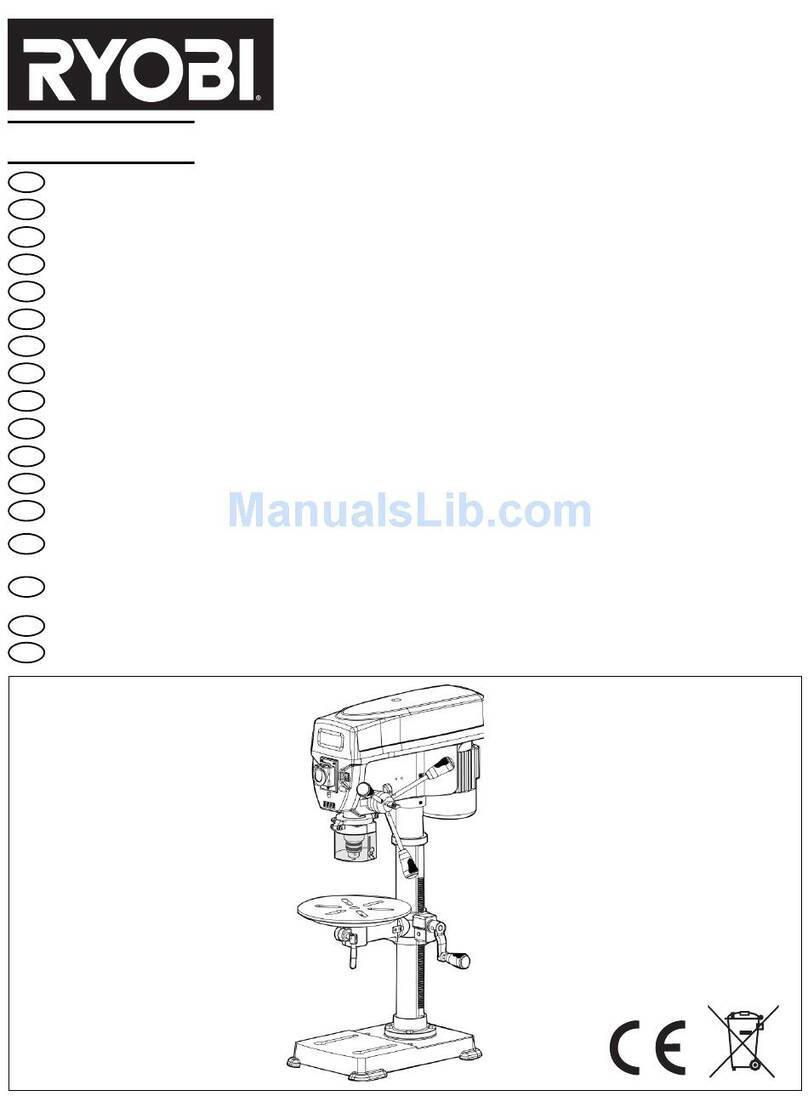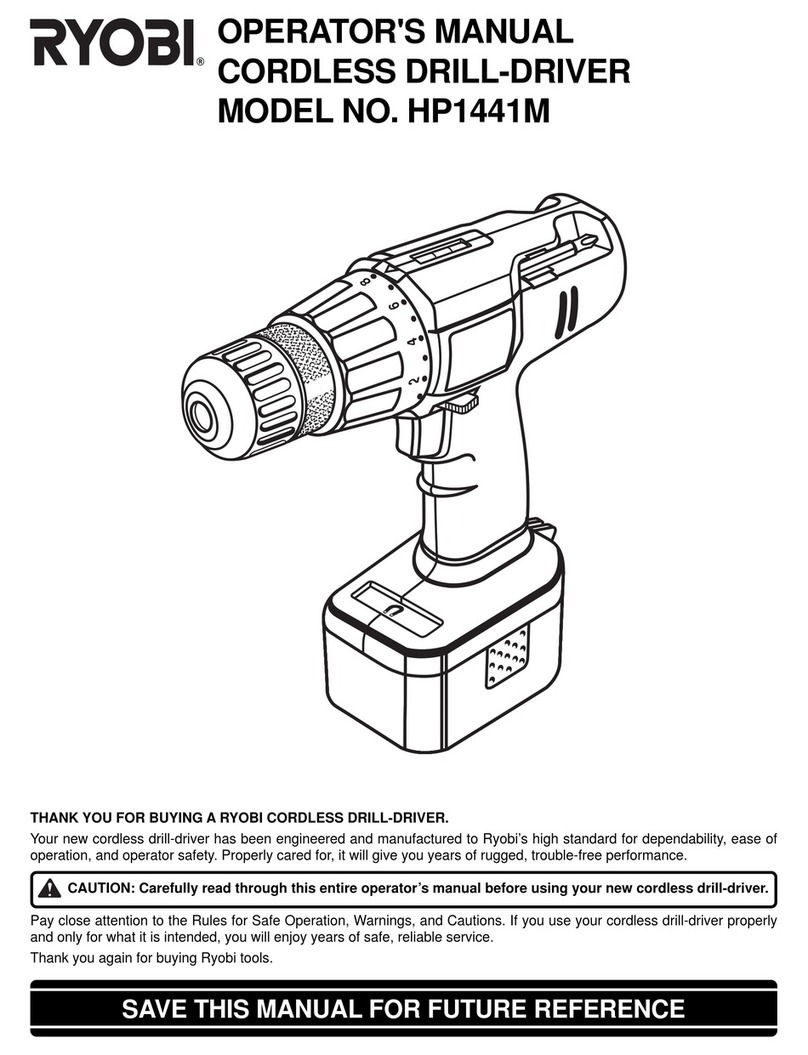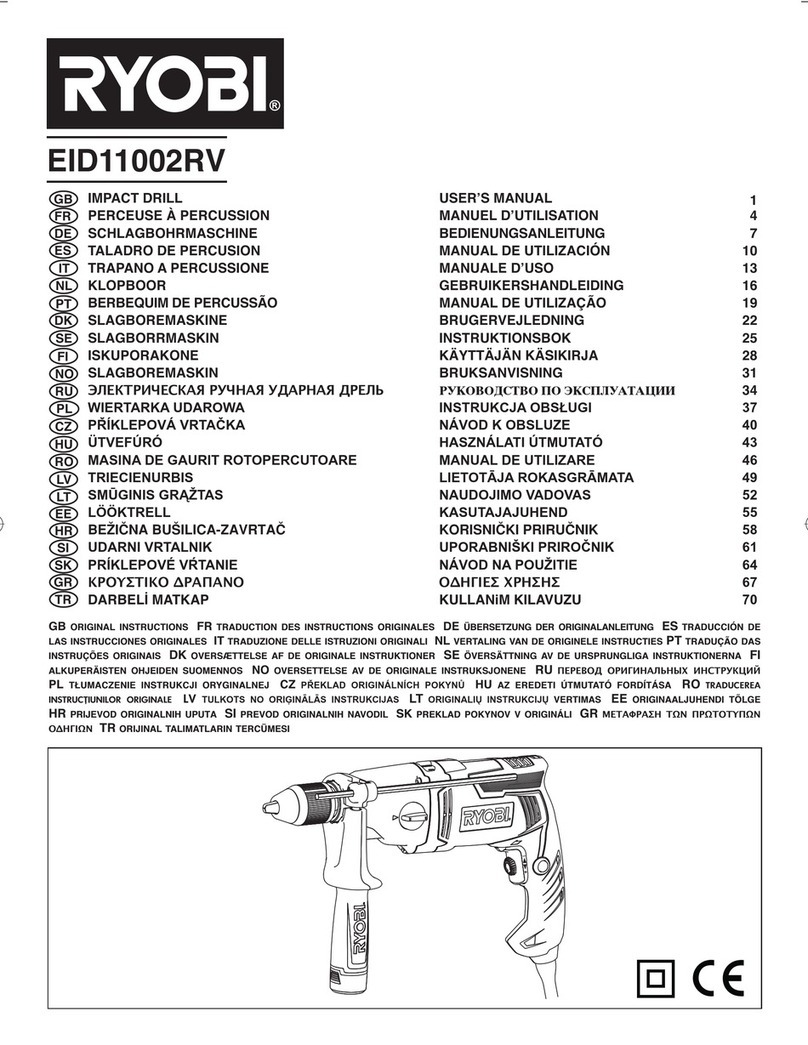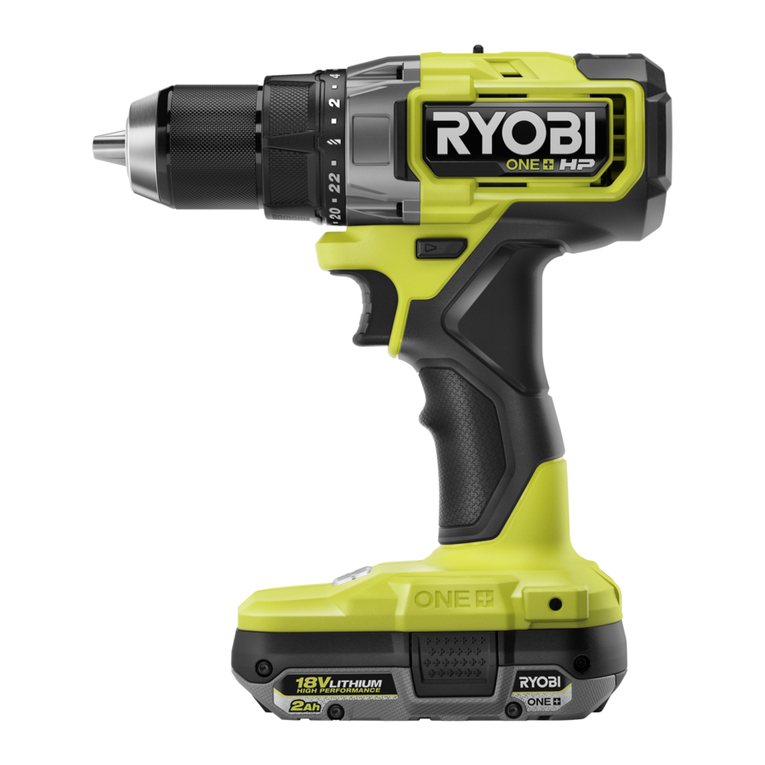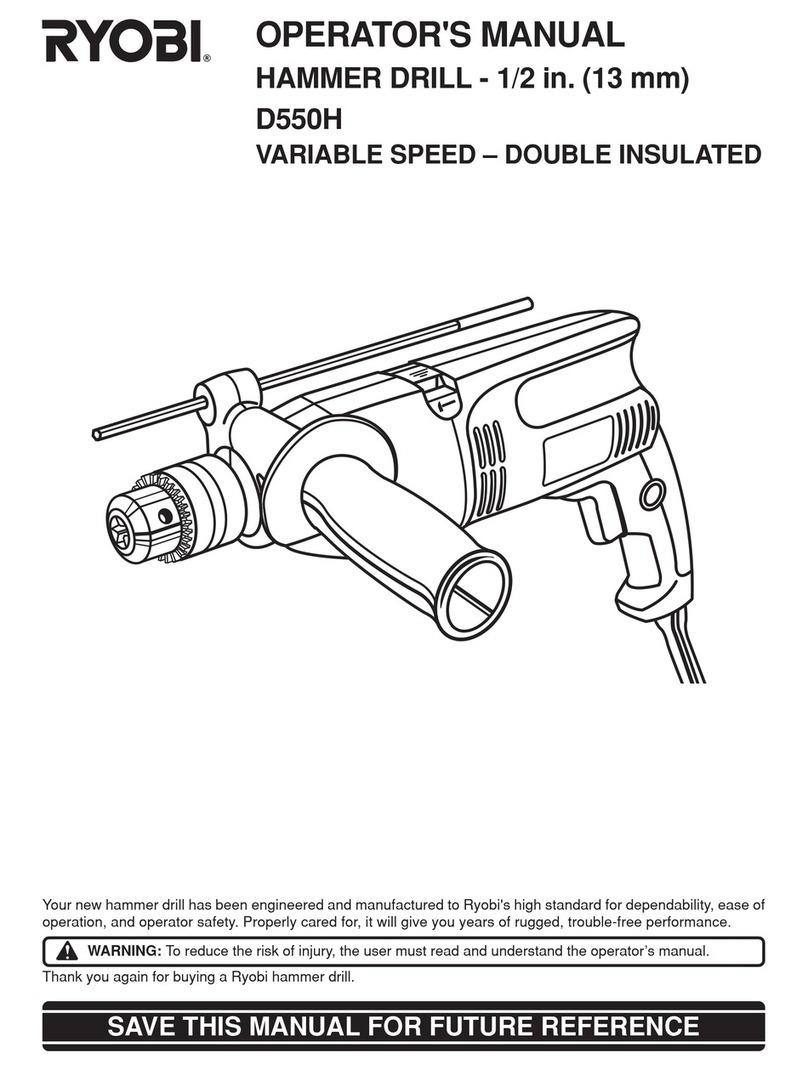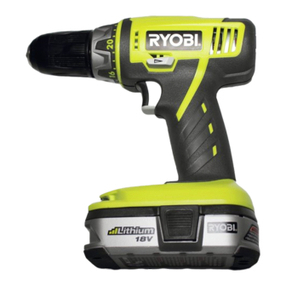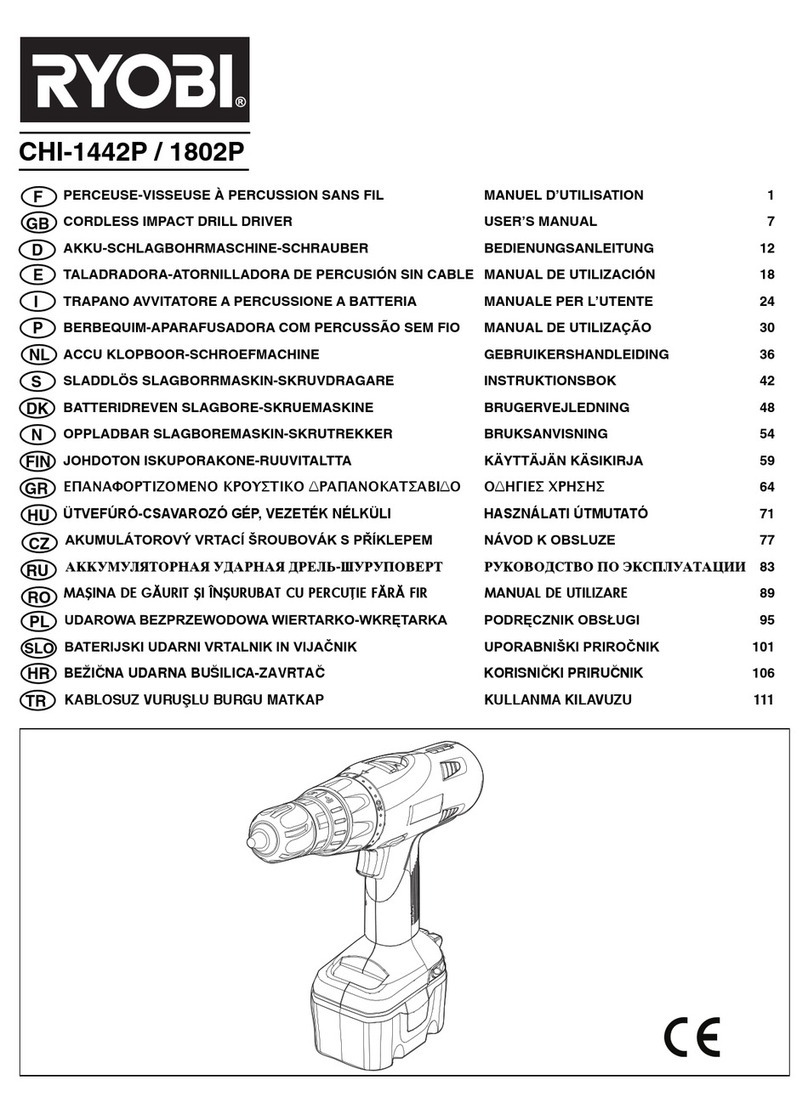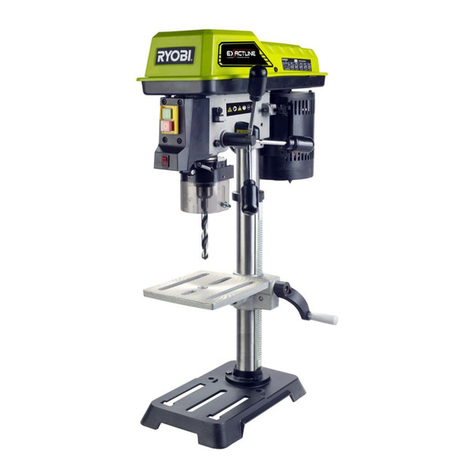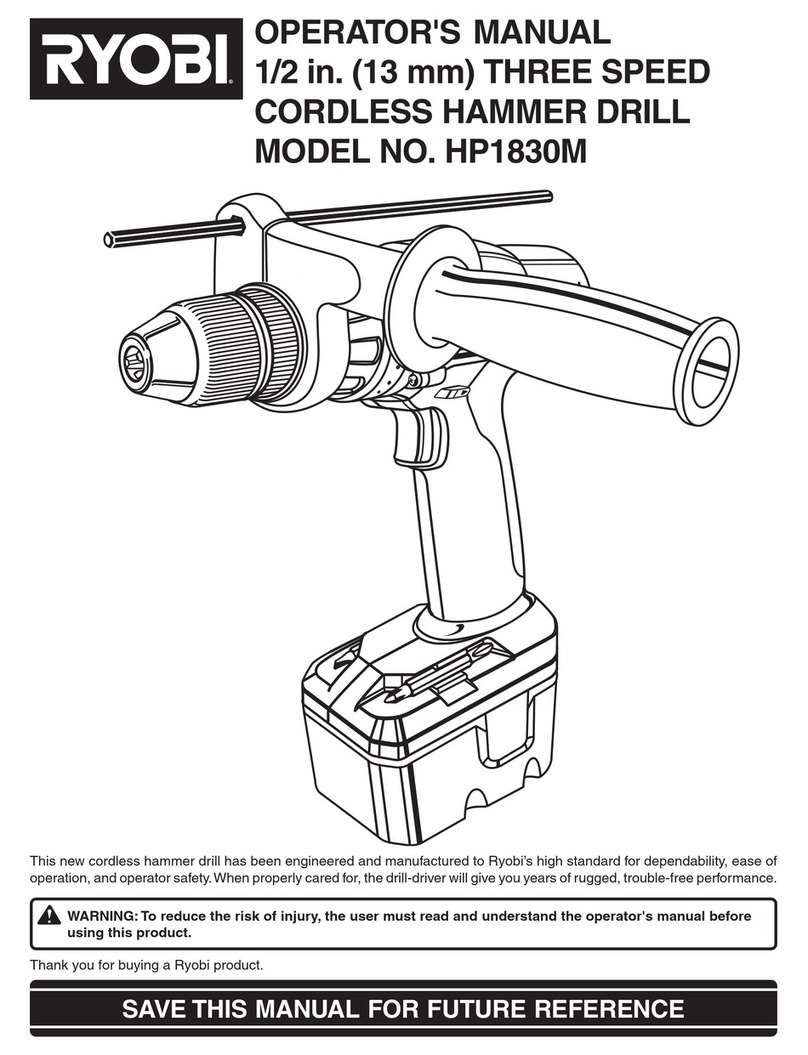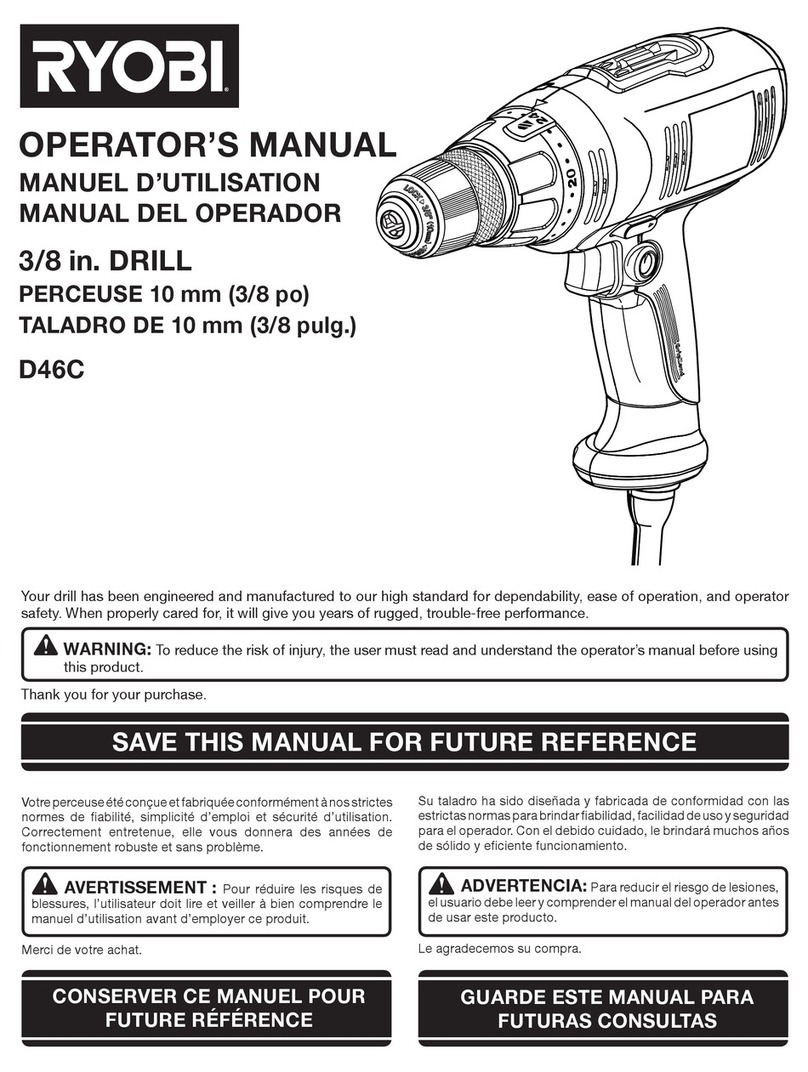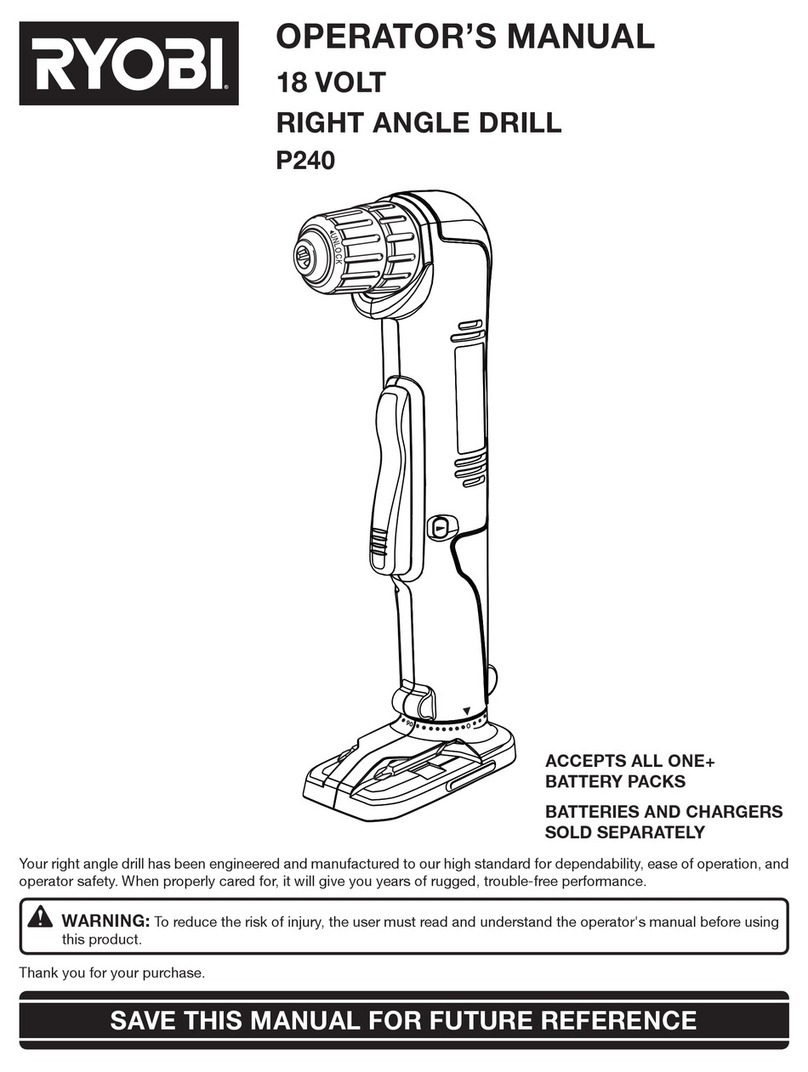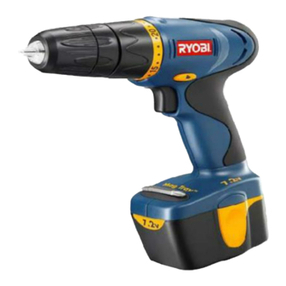1
Safety, performance, and dependability have been given
top priority in the design of your rotary hammer drill.
INTENDED USE
This rotary hammer drill is intended to be used only by
adults who have read and understood the instructions and
warnings in this manual and can be considered responsible
for their actions. It is to be used by a single operator by
grasping both trigger and side handles.
The rotary hammer drill is designed to operate without
hammer function into wood and metal. For chiselling and
masonry drilling, the hammer mode may be used.
The rotary hammer drill is designed to operate with drill
ELWV XS WR WKH PD[LPXP GLDPHWHU GH¿QHG LQ WKH SURGXFW
VSHFL¿FDWLRQWDEOH
Do not use the rotary hammer drill for any other purpose
not described above.
GENERAL POWER TOOL SAFETY WARNINGS
WARNING
Read all safety warnings and all instructions. Failure
to follow the warnings and instructions may result in
HOHFWULFVKRFN¿UHDQGRUVHULRXVLQMXU\
Save all warnings and instructions for future reference.
The term “power tool’’ in the warnings refers to your
mains-operated (corded) power tool or battery-operated
(cordless) power tool.
WORK AREA SAFETY
ŶKeep work area clean and well lit. Cluttered or dark
areas invite accidents.
ŶDo not operate power tools in explosive
atmospheres, such as in the presence of flammable
liquids, gases or dust. Power tools create sparks
which may ignite the dust or fumes.
ŶKeep children and bystanders away while operating
a power tool. Distractions can cause you to lose
control.
ELECTRICAL SAFETY
ŶPower tool plugs must match the outlet. Never
modify the plug in any way. Do not use any adapter
plugs with earthed (grounded) power tools.
Unmodified plugs and matching outlets will reduce risk
of electric shock.
ŶAvoid body contact with earthed or grounded
surfaces, such as pipes, radiators, ranges and
refrigerators. There is an increased risk of electric
shock if your body is earthed or grounded.
ŶDo not expose power tools to rain or wet conditions.
Water entering a power tool will increase the risk of
electric shock.
ŶDo not abuse the cord. Never use the cord for
carrying, pulling or unplugging the power tool.
Keep cord away from heat, oil, sharp edges or
moving parts. Damaged or entangled cords increase
the risk of electric shock.
ŶWhen operating a power tool outdoors, use an
extension cord suitable for outdoor use. Use of a
cord suitable for outdoor use reduces the risk of electric
shock.
ŶIf operating a power tool in a damp location is
unavoidable, use a residual current device (RCD)
protected supply. Use of an RCD reduces the risk of
electric shock.
PERSONAL SAFETY
ŶStay alert, watch what you are doing and use
common sense when operating a power tool. Do
not use a power tool while you are tired or under the
influence of drugs, alcohol or medication. A moment
of inattention while operating power tools may result in
VHULRXVSHUVRQDOLQMXU\
ŶUse personal protective equipment. Always wear
eye protection. Protective equipment such as dust
mask, non-skid safety shoes, hard hat or hearing
protection used for appropriate conditions will reduce
SHUVRQDOLQMXULHV
ŶPrevent unintentional starting. Ensure the switch
is in the off-position before connecting to power
source and/or battery pack, picking up or carrying
the tool. Carrying power tools with your finger on the
switch or energising power tools that have the switch
on invites accidents.
ŶRemove any adjusting key or wrench before turning
the power tool on. A wrench or a key left attached to
a rotating part of the power tool may result in personal
LQMXU\
ŶDo not overreach. Keep proper footing and balance
at all times. This enables better control of the power
tool in unexpected situations.
ŶDress properly. Do not wear loose clothing or
jewellery. Keep your hair, clothing and gloves away
from moving parts. /RRVH FORWKHV MHZHOOHU\ RU ORQJ
hair can be caught in moving parts.
ŶIf devices are provided for the connection of dust
extraction and collection facilities, ensure these are
connected and properly used. Use of dust collection
can reduce dust-related hazards.
POWER TOOL USE AND CARE
ŶDo not force the power tool. Use the correct power
tool for your application. The correct power tool will
GRWKHMREEHWWHUDQGVDIHUDWWKHUDWHIRUZKLFKLWZDV
designed.
ŶDo not use the power tool if the switch does not turn
it on and off. Any power tool that cannot be controlled
with the switch is dangerous and must be repaired.
ŶDisconnect the plug from the power source and/or
the battery pack from the power tool before making
any adjustments, changing accessories or storing
power tools. Such preventive safety measures reduce
the risk of starting the power tool accidentally.
ŶStore idle power tools out of the reach of children
and do not allow persons unfamiliar with the power
tool or these instructions to operate the power tool.
Power tools are dangerous in the hands of untrained
users.
ŶMaintain power tools. Check for misalignment or
binding of moving parts, breakage of parts and any
other condition that may affect the power tool’s
operation. If damaged, have the power tool repaired
before use. Many accidents are caused by poorly
maintained power tools.
ŶKeep cutting tools sharp and clean. Properly
maintained cutting tools with sharp cutting edges are
less likely to bind and are easier to control.
ŶUse the power tool, accessories and tool bits etc,
in accordance with these instructions, taking into
account the working conditions and the work to
be performed. Use of the power tool for operations
different from those intended could result in a
hazardous situation.
SERVICE
ŶHave your power tool serviced by a qualified repair
person using only identical replacement parts.


